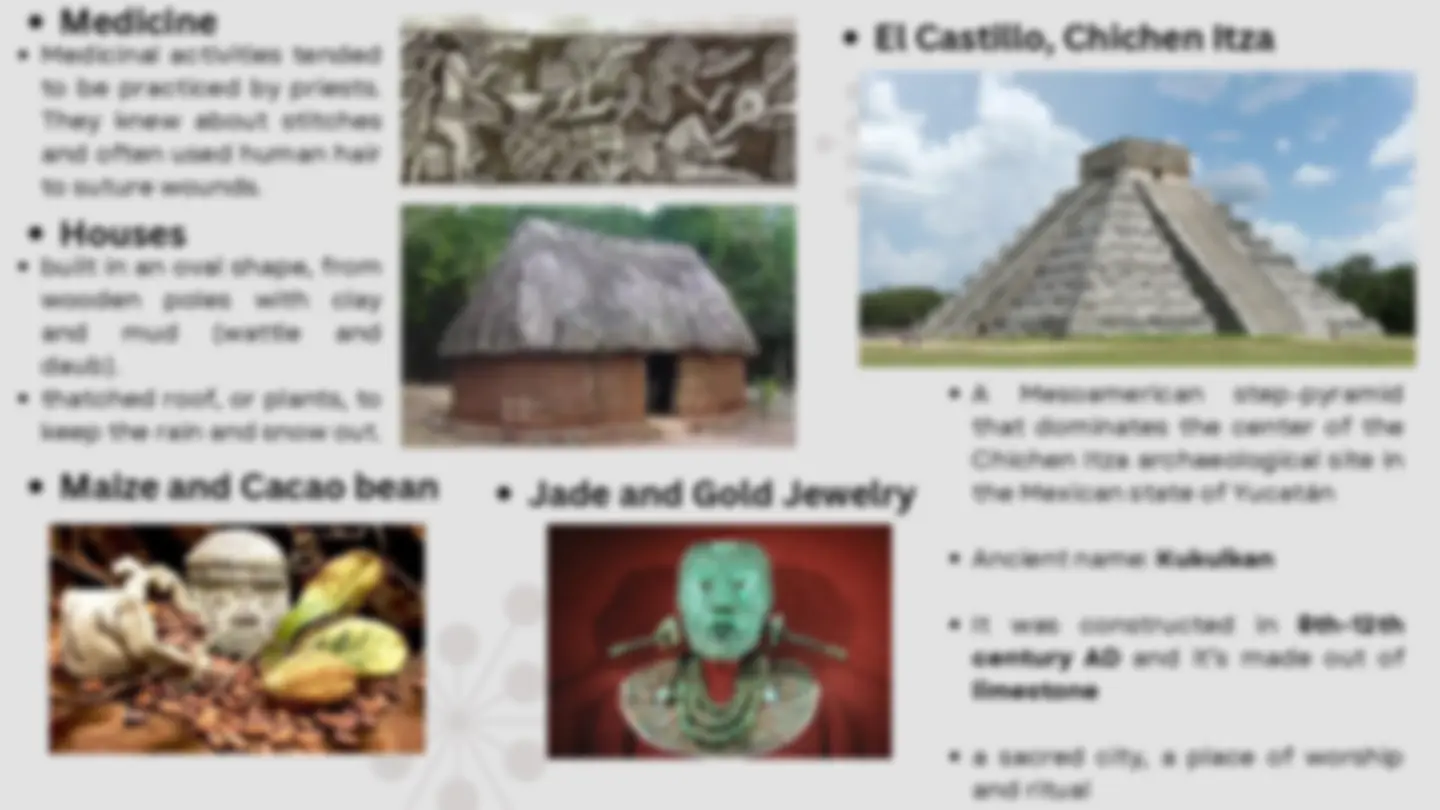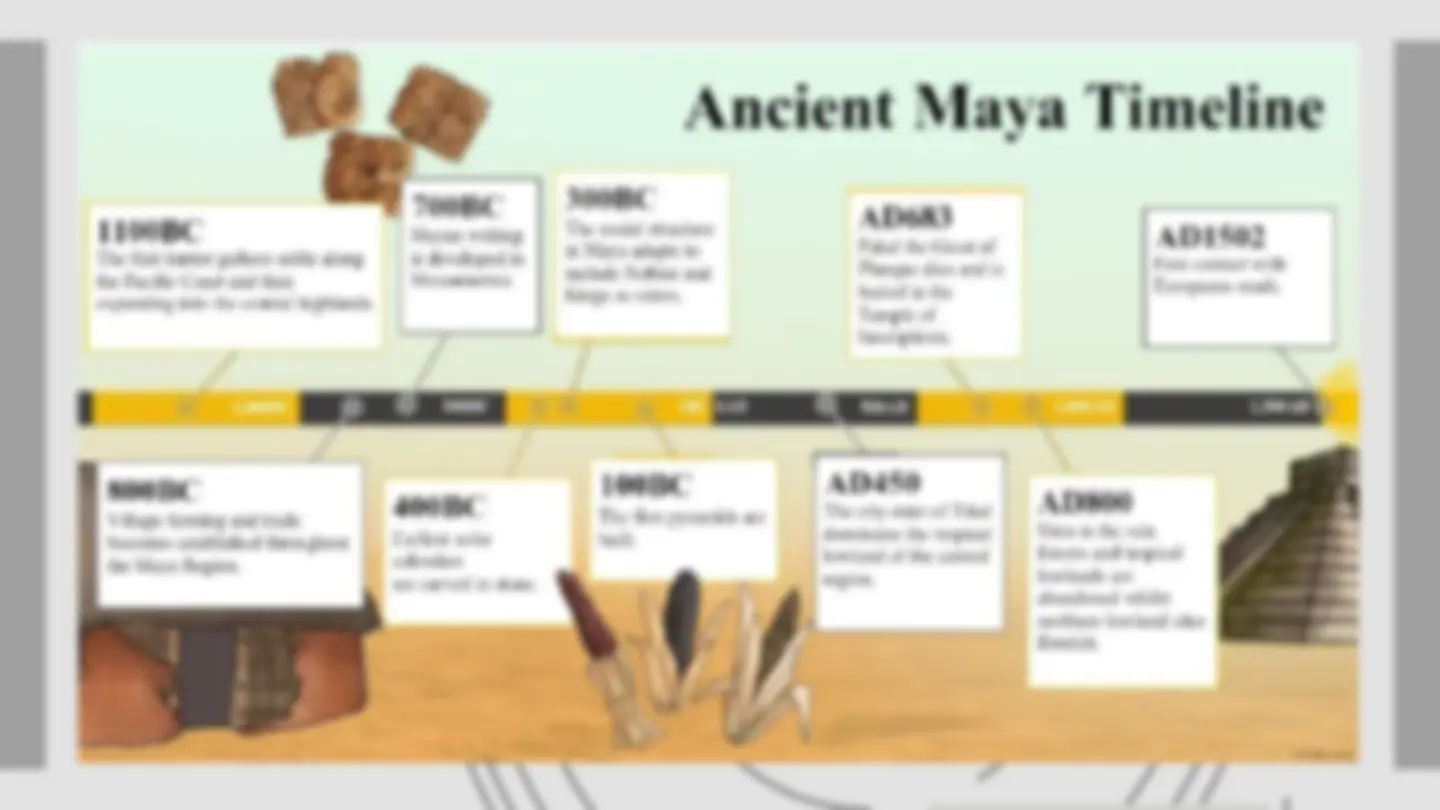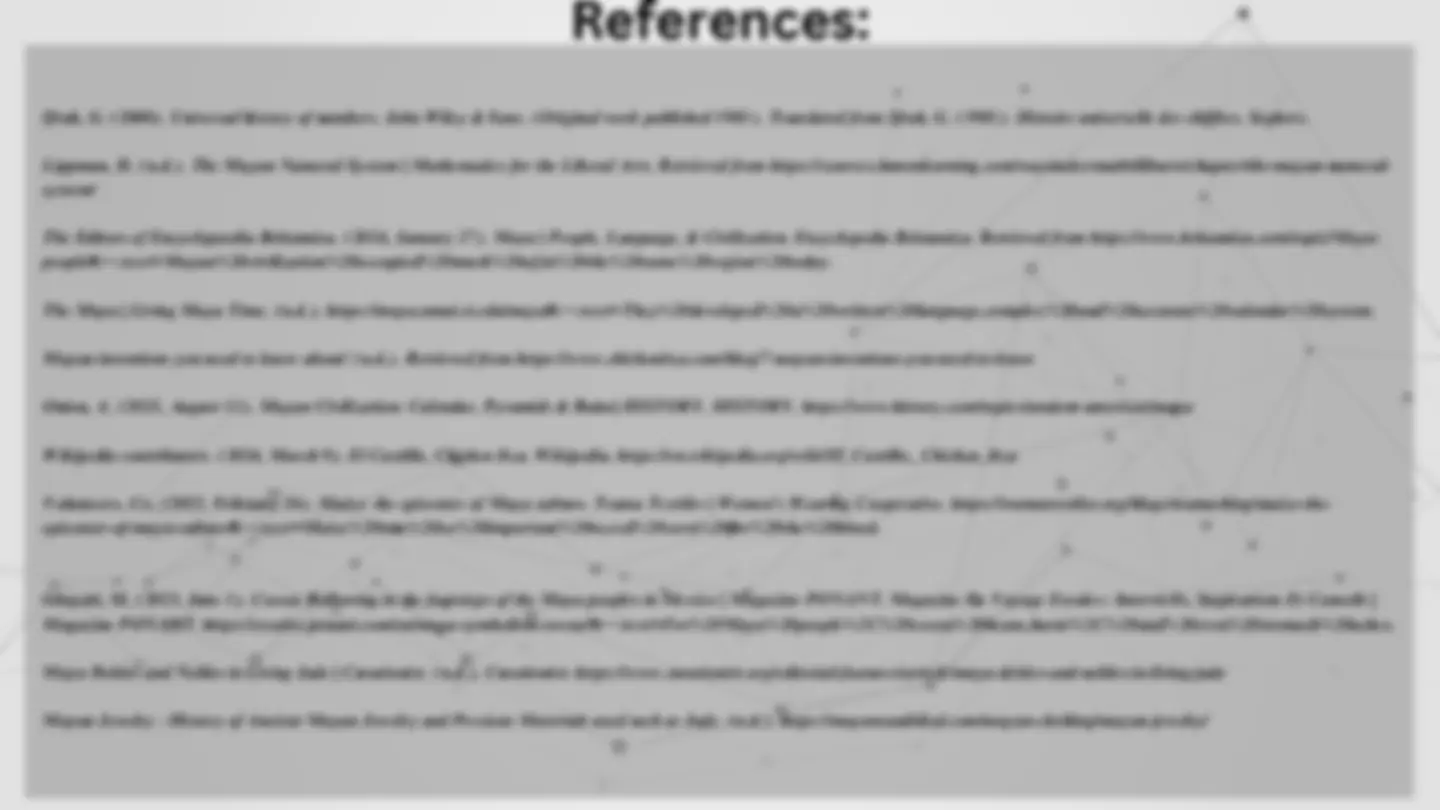





Study with the several resources on Docsity

Earn points by helping other students or get them with a premium plan


Prepare for your exams
Study with the several resources on Docsity

Earn points to download
Earn points by helping other students or get them with a premium plan
Community
Ask the community for help and clear up your study doubts
Discover the best universities in your country according to Docsity users
Free resources
Download our free guides on studying techniques, anxiety management strategies, and thesis advice from Docsity tutors
The mayan civilization was a highly advanced and influential society that flourished in mesoamerica from around 1800 b.c. To the 16th century. This document delves into the rich history and remarkable accomplishments of the maya, covering their impressive architectural feats, innovative technologies, and intricate cultural practices. From the construction of grand pyramids and the development of a sophisticated calendar system to their mastery of agriculture and the creation of a complex writing system, the maya left an indelible mark on the ancient world. This comprehensive overview explores the various aspects of mayan civilization, providing insights into their religious beliefs, social structures, and technological advancements that continue to captivate scholars and enthusiasts alike.
Typology: Slides
1 / 5

This page cannot be seen from the preview
Don't miss anything!




University of San Carlos University of San Carlos
of Central America, from Chiapas and Yucatán, now part of southern Mexico, through Guatemala, Honduras, Belize, and El Salvador and into Nicaragua.
when the earliest Maya settlements were established.
nature that the highly devoted Maya people worshipped. The Maya kings, known as "kuhul ajaw" (holy lords), held a hereditary succession and professed to be descended from gods. Mayan cultural practices included rituals and feasts known as costumbre, which often involved blood, obtained through human bloodletting or sacrifices of animals or humans. Funerals were also ritualistic affairs involving cremation or burial, with traditions aimed at releasing the k'uh, or spiritual essence, of the deceased.
Mayan Hieroglyphs Number System
Mayan Calendars
_Ifrah, G. (2000). Universal history of numbers. John Wiley & Sons. (Original work published 1981). Translated from Ifrah, G. (1981). Histoire universelle des chiffres. Seghers. Lippman, D. (n.d.). The Mayan Numeral System | Mathematics for the Liberal Arts. Retrieved from https://courses.lumenlearning.com/waymakermath4libarts/chapter/the-mayan-numeral- system/ The Editors of Encyclopaedia Britannica. (2024, January 27). Maya | People, Language, & Civilization. Encyclopedia Britannica. Retrieved from https://www.britannica.com/topic/Maya- people#:~:text=Mayan%20civilization%20occupied%20much%20of,in%20the%20same%20region%20today. The Maya | Living Maya Time. (n.d.). https://maya.nmai.si.edu/maya#:~:text=They%20developed%20a%20written%20language,complex%20and%20accurate%20calendar%20system. Mayan inventions you need to know about! (n.d.). Retrieved from https://www.chichenitza.com/blog/7-mayan-inventions-you-need-to-know Onion, A. (2023, August 11). Mayan Civilization: Calendar, Pyramids & Ruins| HISTORY. HISTORY. https://www.history.com/topics/ancient-americas/maya Wikipedia contributors. (2024, March 9). El Castillo, Chichen Itza. Wikipedia. https://en.wikipedia.org/wiki/El_Castillo,Chichen_Itza Volunteers, C.-. (2021, February 16). Maize: the epicenter of Maya culture. Trama Textiles | Women’s Weaving Cooperative. https://tramatextiles.org/blogs/trama-blog/maize-the- epicenter-of-maya-culture#:~:text=Maize%20was%20so%20important%20to,red%20corn%20for%20the%20blood. Ghayati, M. (2023, June 1). Cocoa: Following in the footsteps of the Maya peoples in Mexico | Magazine PONANT. Magazine De Voyage Escales : Interviews, Inspirations Et Conseils | Magazine PONANT. https://escales.ponant.com/en/maya-symbolism-cocoa/#:~:text=For%20Maya%20people%2C%20cocoa%20beans,burns%2C%20and%20even%20stomach%20aches. Maya Deities and Nobles in Living Jade | Curationist. (n.d.). Curationist. https://www.curationist.org/editorial-features/article/maya-deities-and-nobles-in-living-jade Mayan Jewelry - History of Ancient Mayan Jewelry and Precious Materials used such as Jade. (n.d.). https://mayansandtikal.com/mayan-clothing/mayan-jewelry/ References: